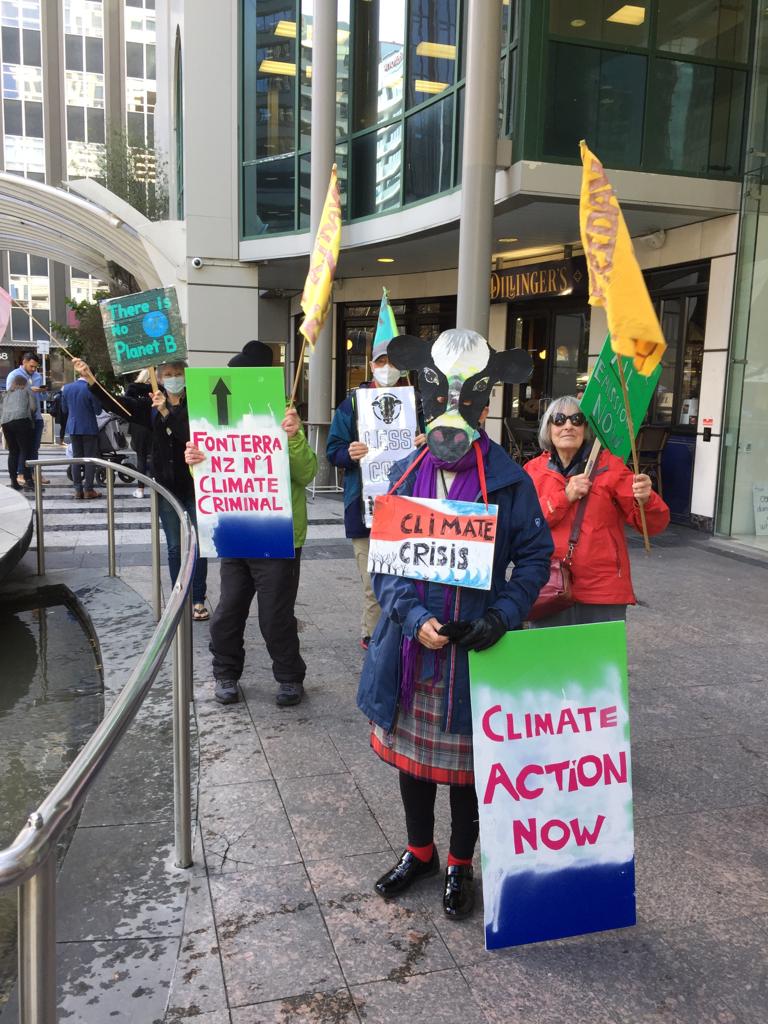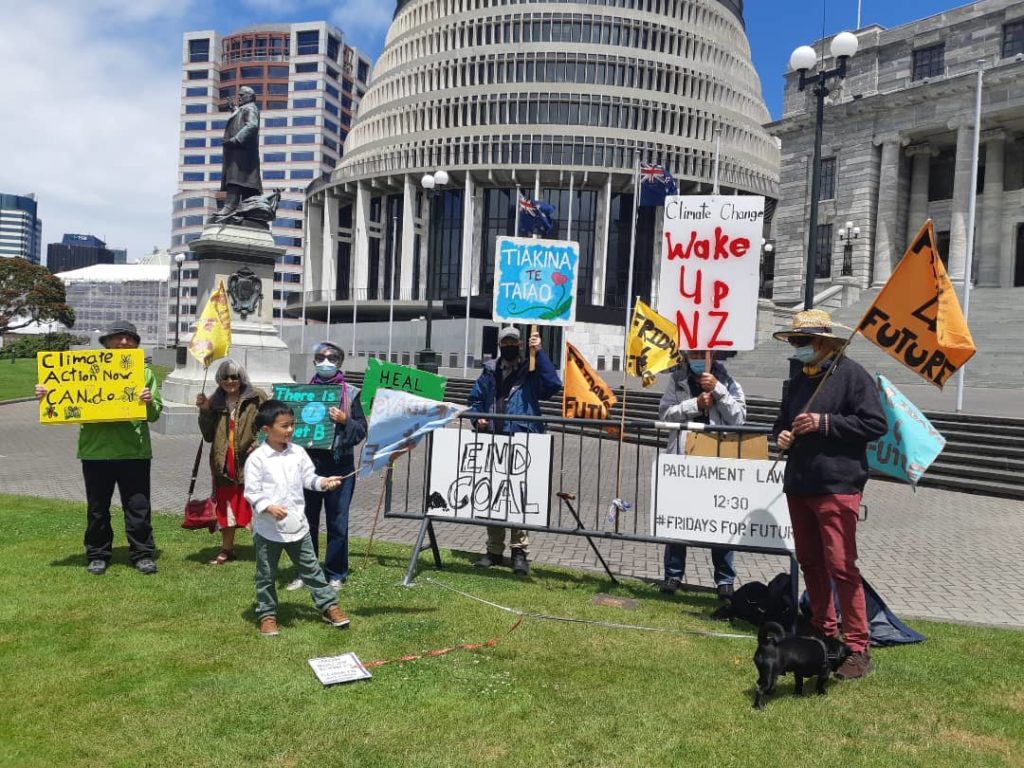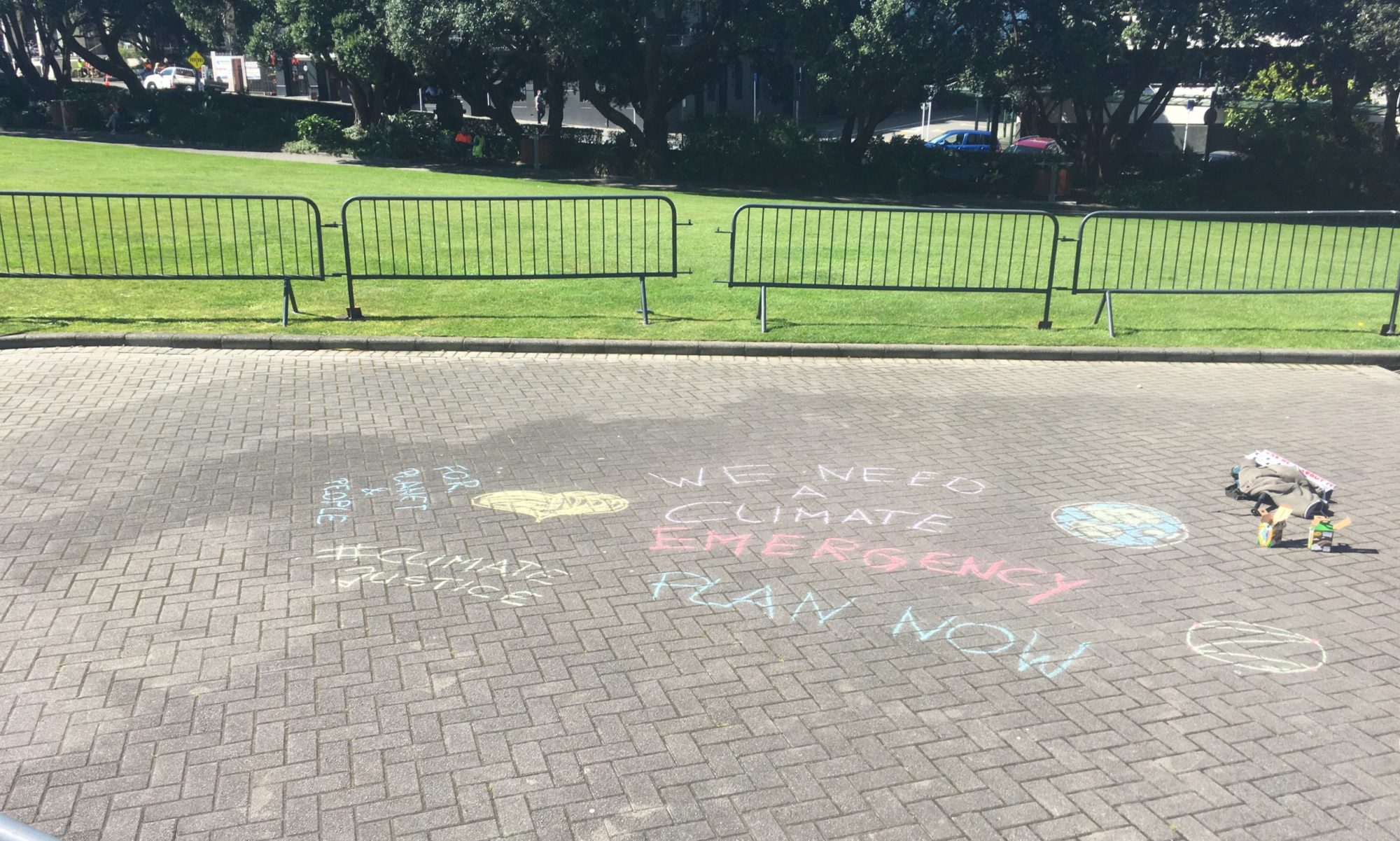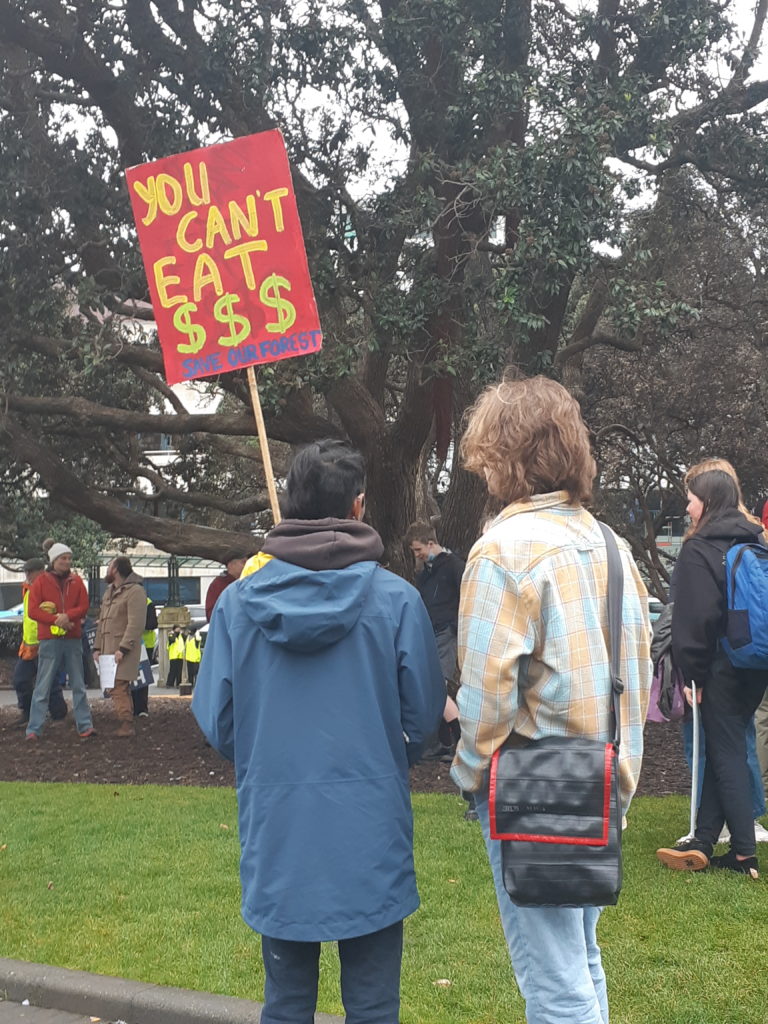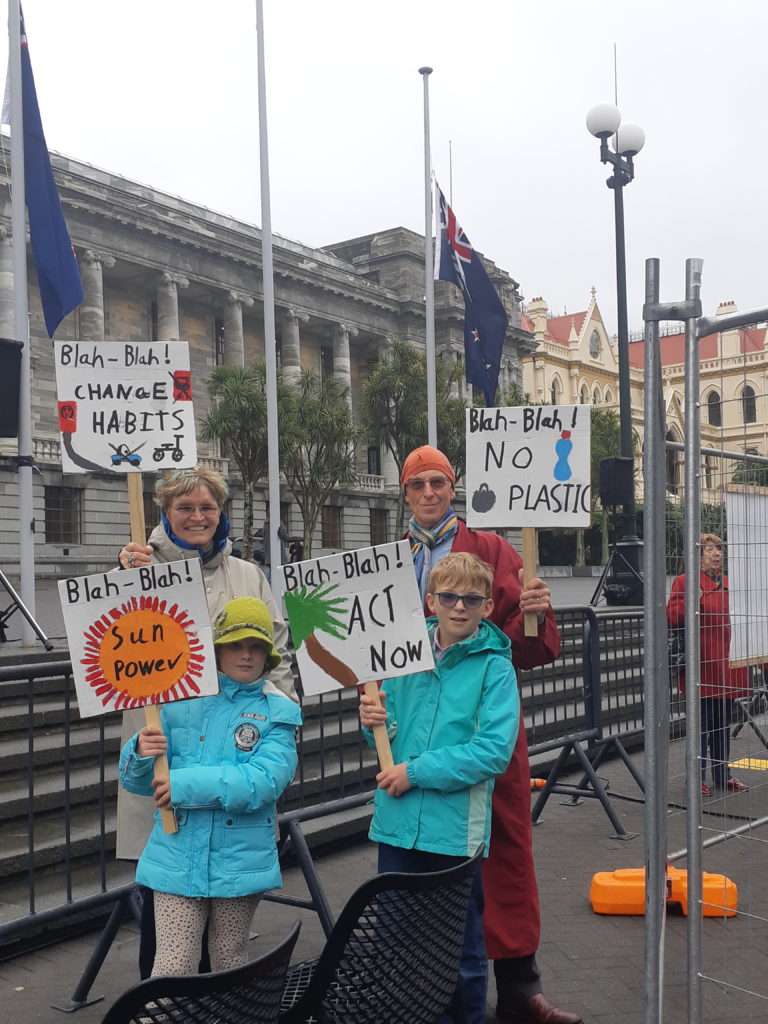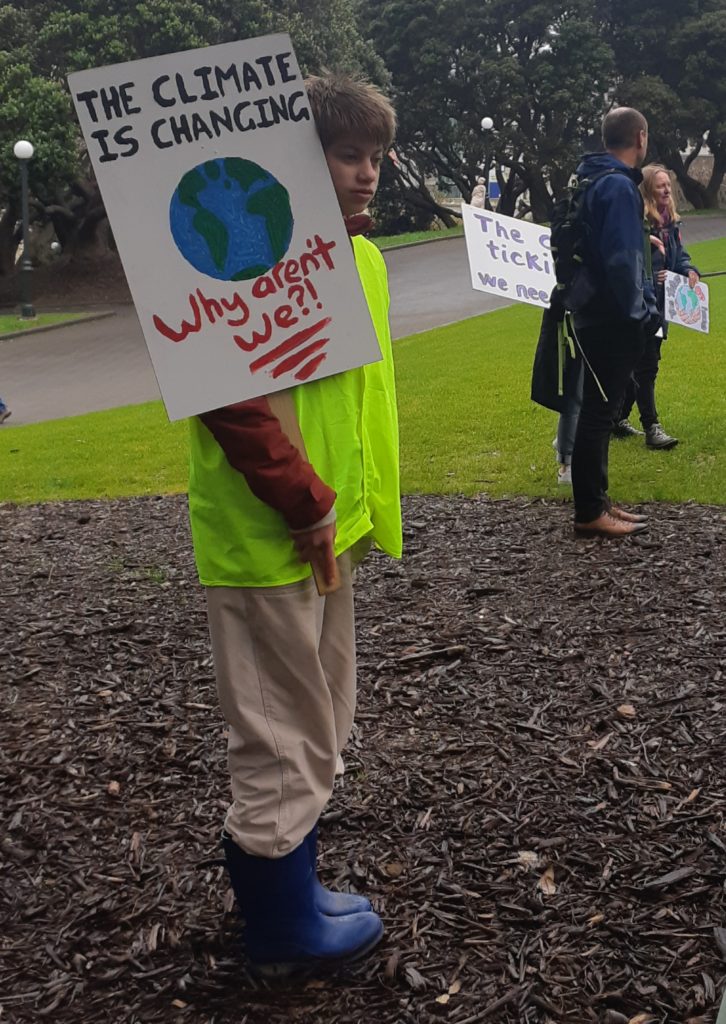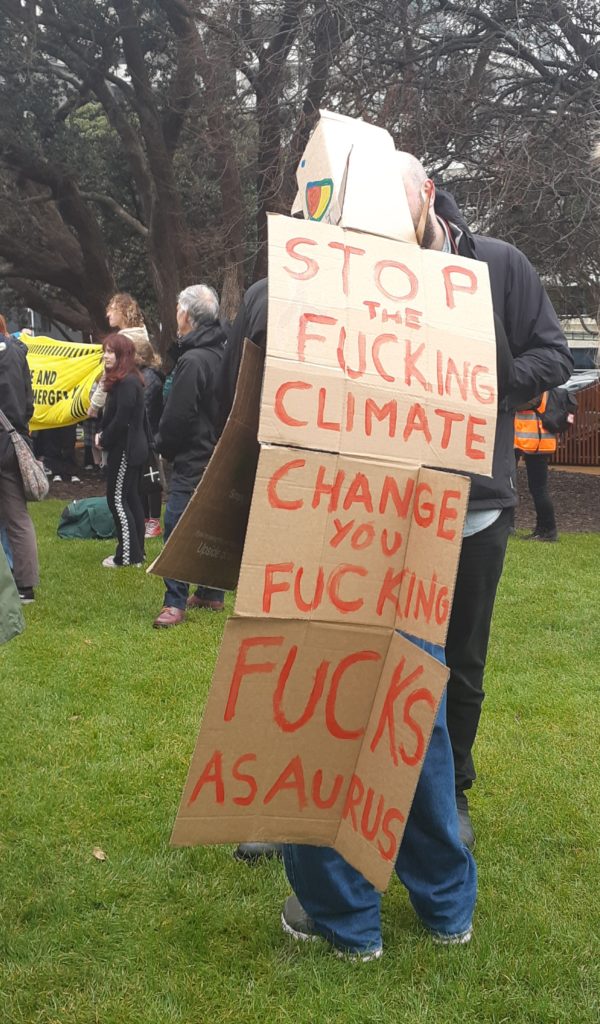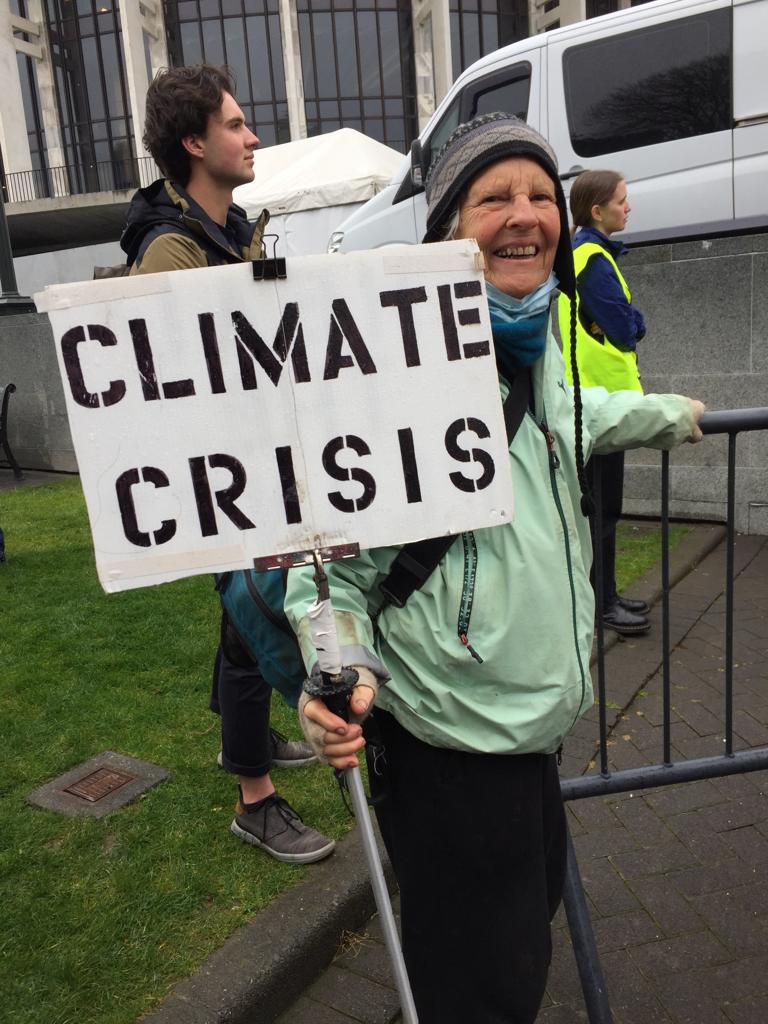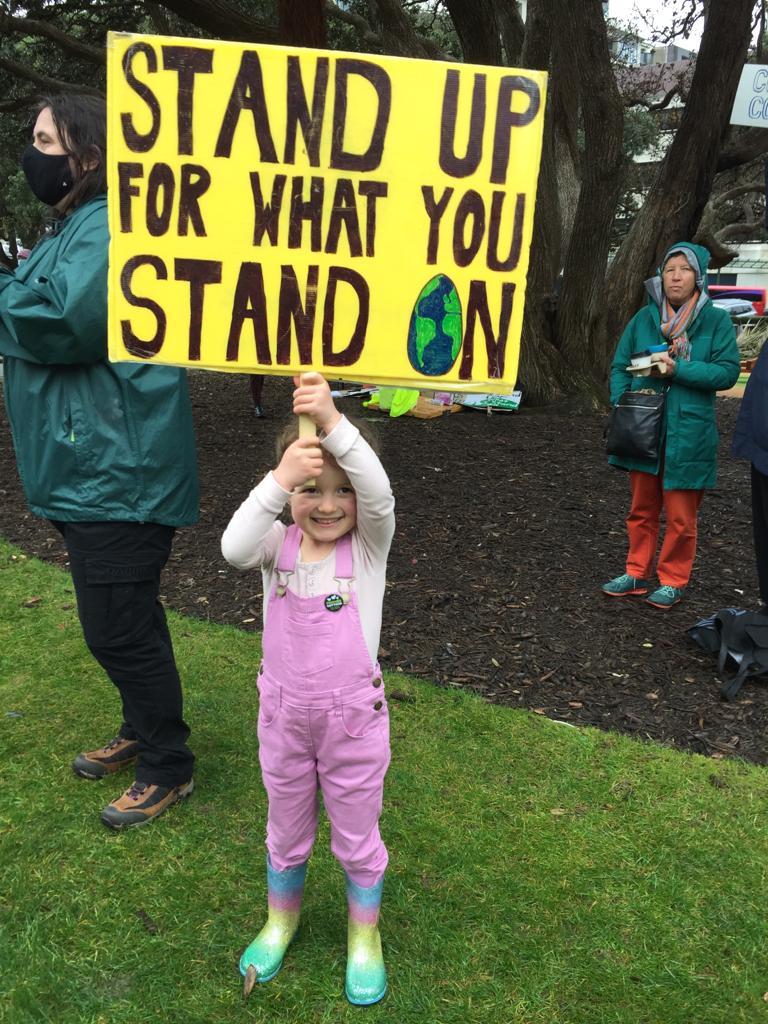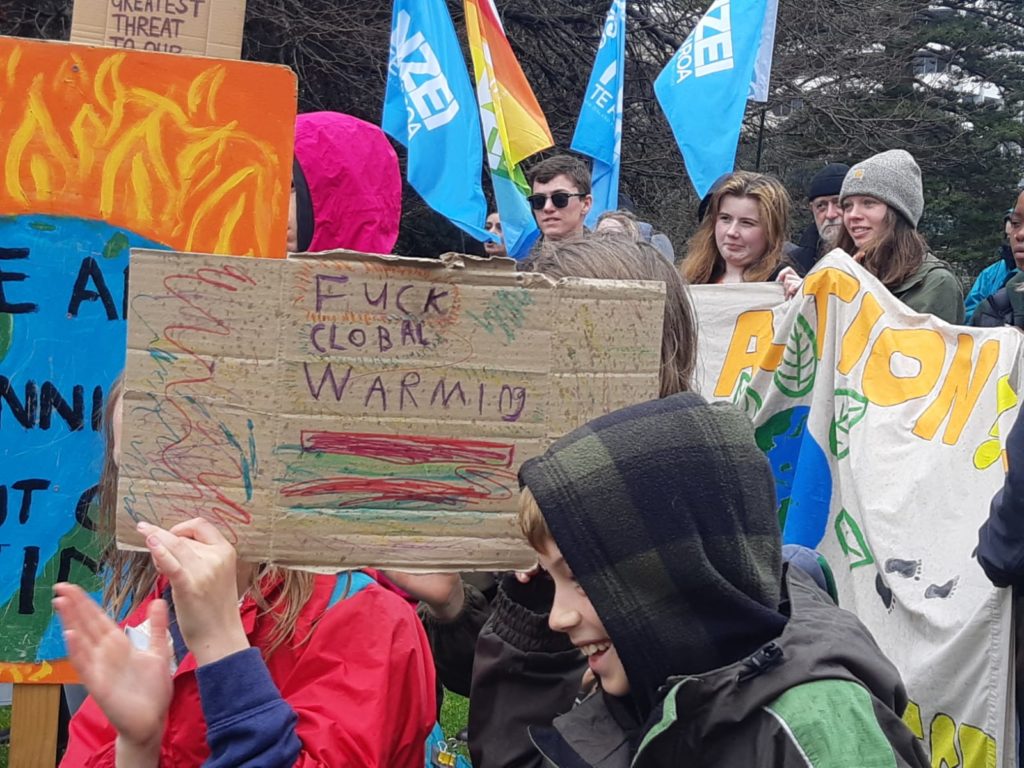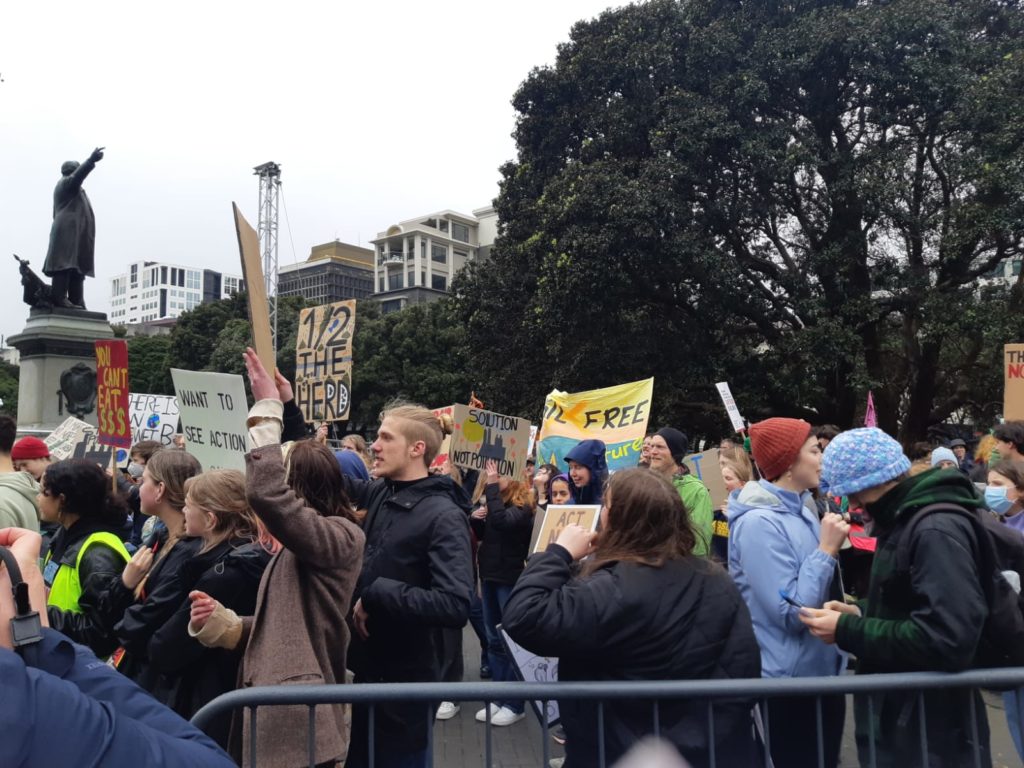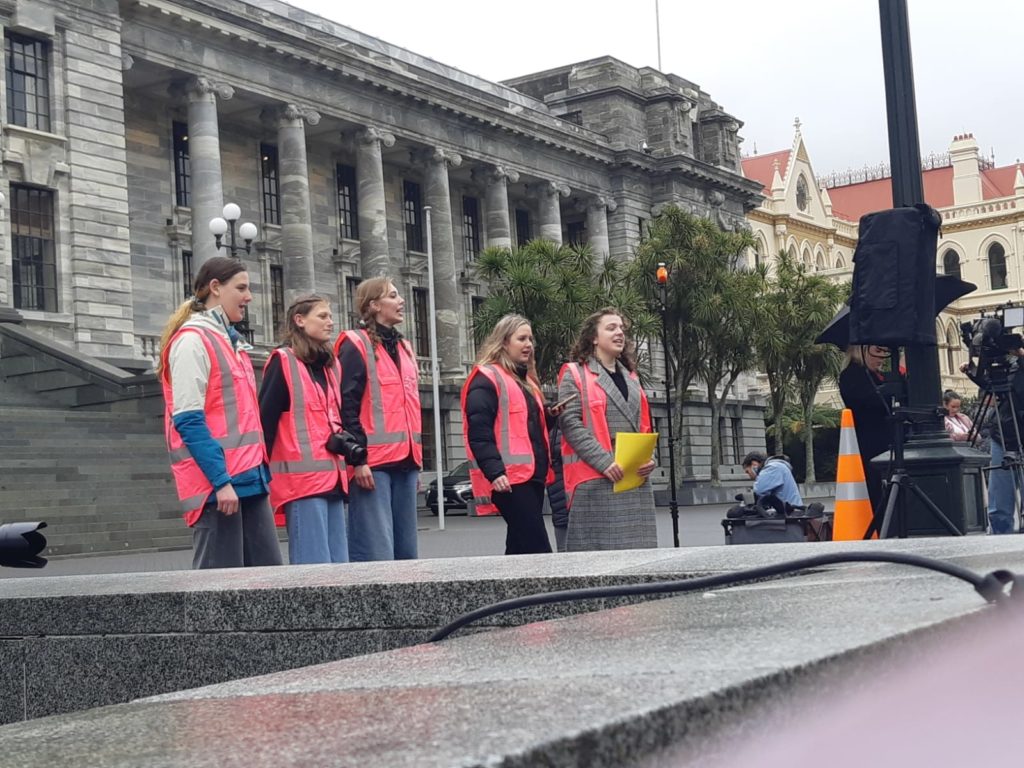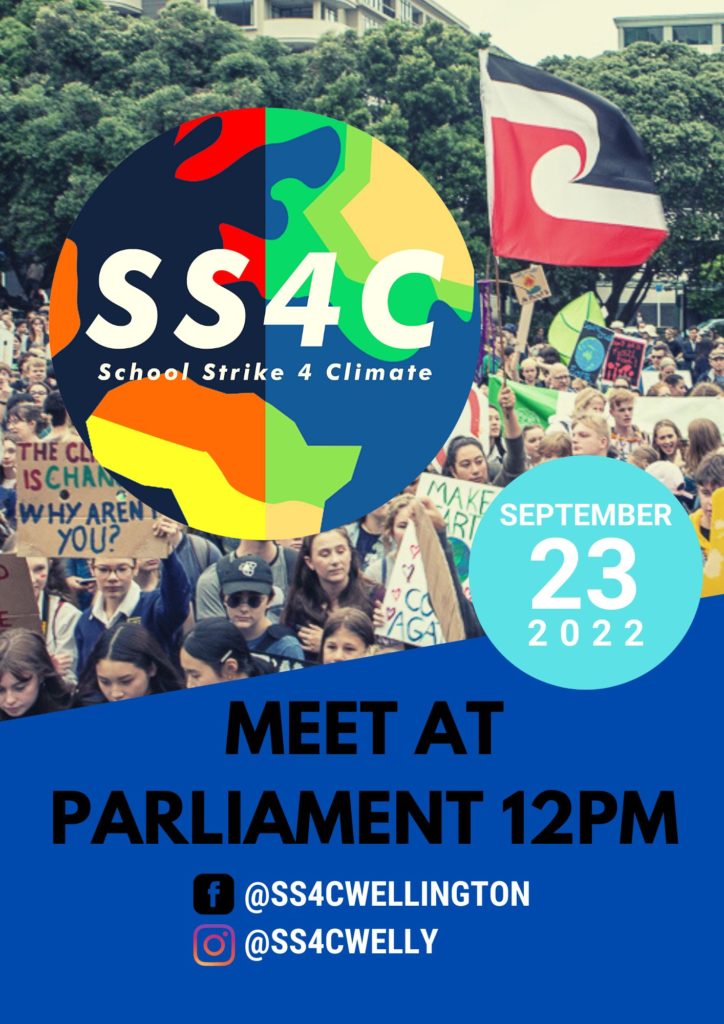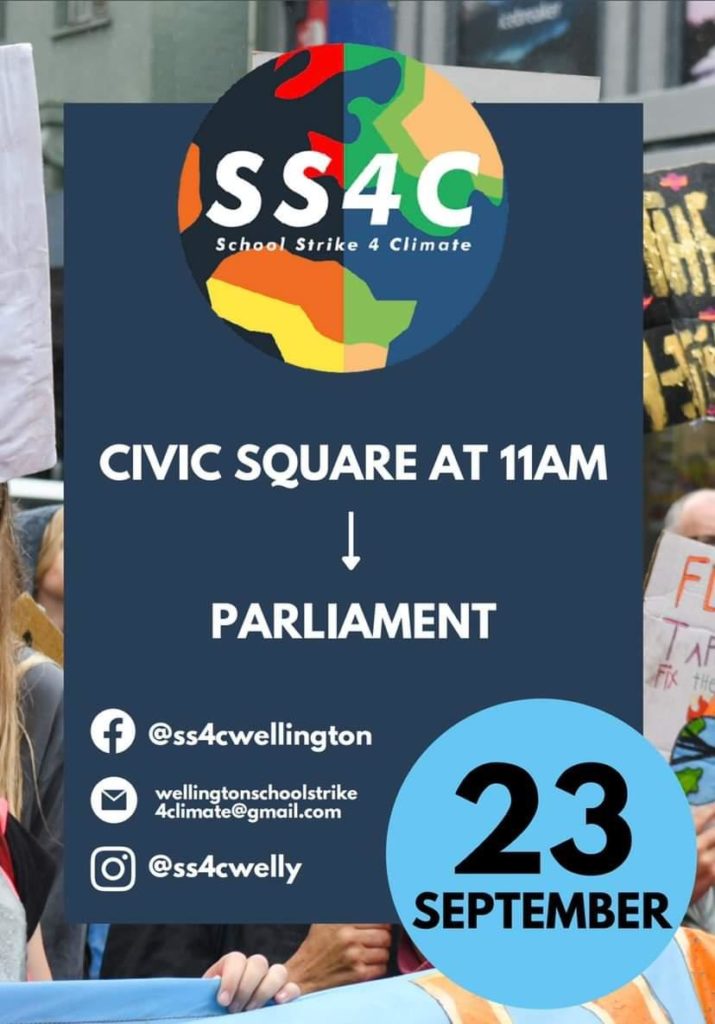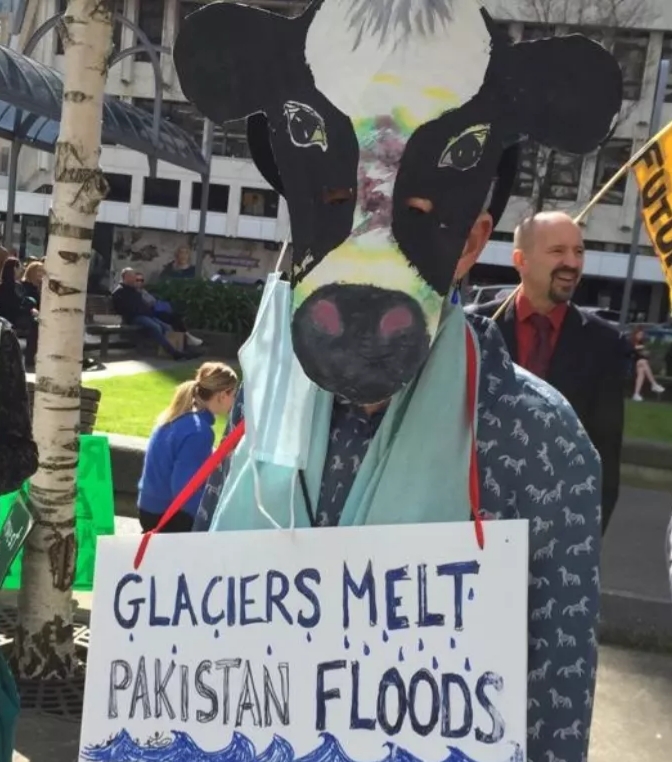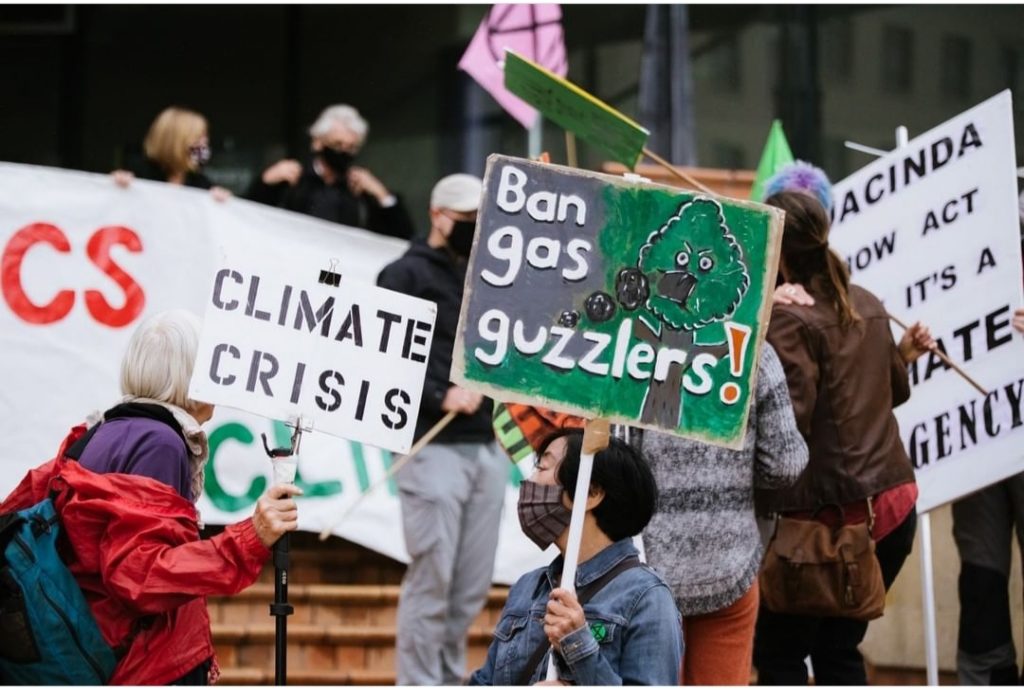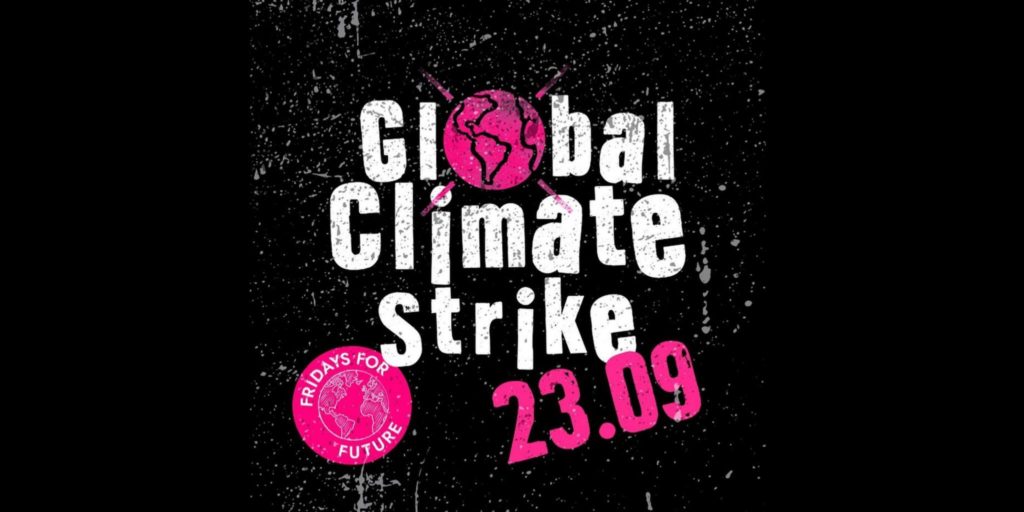On Wednesday 17 August we met with Simon Tucker, Sustainability Officer for Fonterra.
Apparently there is no suitable meeting room at their Wellington office, so we were forced to do it in the (very noisy) foyer. You can read our transcript of the meeting below. Apologies in advance for gaps in the conversation, due to people walking past having loud conversations, and the automatic doors swishing open and closed…
Start of transcript …..
QUESTION FROM CAZ: What is Fonterra doing about cutting emissions?
SIMON TUCKER – so… if you’re interested…We are en route to reducing emissions by 10% by 2030 and net Zero by 2050…our net zero target has…just across all our emissions and obviously reducing on-farm emsisions is our major preoccupation we have a pretty strong plan as to how we are going to get out of fossil fuel use and our manufacturing operations by 2037 … and we are continuing to work on that
Sitting here today we deliver the lowest carbon footprint dairy products in the world and continue to be the lowest carbon footprint dairy nutrition available
CAZ – we’ve seen figures that contradict that.. the OECD (Orgnisation fro Economic Cooperation and Development) figures…actually put NZ somewhere around top ten of 30 countries … with the higher emissions …they dont bear that out..
SIMON TUCKER… what you’ve got do is is look at the intensity of it…and we are the lowest…
CAZ – ..the thing is they use the figures are per hectare and per weight
SIMON TUCKER We are very comfortable with our science which is done by Agresearch here in NZ and internationally peer-reviewed….so anyone telling you otherwise…I suspect is…..(mumble)
KIT – our figures are that NZ per capita emissions are the fifth highest in the world by which…
SIMON TUCKER – On a (global?) basis nz emissions are a tiny, tiny portion of global emissions
KIT – but on a moral basis surely its per capita which counts more than the total if we say we’re gonna let ourselves off the hook because we’re a small country, we don’t produce as much as China, where does that leave us morally?
SIMON TUCKER – our commitment is to reduce our emissions and get to net zero by 2050 were doing everything we can to reduce our emissions
KIT – not so, agribusiness has removed itself from the ETS
SIMON TUCKER – NZ agriculture sector will be the only agriculture sector in the world which is…charged for its emissions… we are absolutely world leading in this … we will be the only agriculture sector in the world which has emissions charges
(REALLY!?)
CAZ – we’ve heard that… Ireland is aiming to cut their emissions …by 2030 and the Netherlands which is another dairy country is aiming to cut 50% by 2030 so that’s a long way ahead of where we are
SIMON TUCKER – well there are plans where we still lower carbon….(mumbles)
(noise)
KIT – I can’t hear you Simon
SIMON TUCKER – I was just saying our plans will keep us in a lower carbon position than either Netherlands or Ireland by 2030
KIT – you’re talking about total not…
SIMON TUCKER – I’m talking about the intensity of the production…
KIT – intensity meaning?
SIMON TUCKER – ….what is the unit of dairy produced…what is the carbon footprint of that unit…and we can produce a unit of dairy, whatever it is, kilogram of product or a litre of the product, we can produce that with a lower carbon footprint than other countries can produce it….
KIT – its just lower per capita? Or lower per unit
SIMON TUCKER – ah
KIT – or lower per unit?
SIMON TUCKER – lower per unit
CAZ – I think we were looking at different figures there…so a question would be what would be what is the…measurement for methane that’s being used…vis a vis other GHG figures
SIMON TUCKER – We’ll be using NFCCC standard methodology to achieve that… we are aware of the discussion around how exactly methane is assessed…and we’re interested in where that debate lands, but now we just use what the rules are…
CAZ – what their rules are…so what is their conversion?
SIMON TUCKER – I’m not…I… don’t have that at the top of my mind I’m not a scientist…I’m really…our scientific experts are giving us (mumble / noise)
CAZ – and that’s what we do, ‘cos we (noise) not scientists either however …particularly when scientists that are paid by the organisation they tend to give what’s wanted… and I’ve certainly seen figures for methane conversion…ranging from like 10 times CO2 right up to 80 and that makes a huge difference to the calculations…and…I would…hesitate to say that the lower units …were ok because it’s a small number of scientists coming up with that…and we do know that the duration of methane in the atmosphere is going to be more longlasting due to pollution from fires…we’ve got a huge problem
SIMON TUCKER – We’re not sniffing around at primitive science, we want absolutely international peer-reviewed mainstream science…for our decision making (noise)
CAZ – so hang on, so what would it be worth putting your scientists to look at the OECD
SIMON TUCKER – yeah we’re very happy to look at them
CAZ – because they’re very different
SIMON TUCKER – yep no in fact I would be very happy if you could send us whatever data you’re working off and we can have a look at (noise)
CAZ – that would be lovely
KIT – Will you reciprocate …
SIMON TUCKER – yes absolutely we can send you…date that’s done by Agresearch that’s looked at global environment footprint from dairying …we’re very happy that’s publicly available material
CAZ – so, how – what is the plan to (mumble) or emissions generally…
SIMON TUCKER – Well, we have to, as I said, an aspiration to be a net zero business, end to end, by 2050 so, we need to eliminate as much carbon dioxide, nitrous oxide and methane as we can, from our system …where we can’t eliminate it, we…certainly…of gases…we need to get them to a stage where the impact is stable…
CAZ – so what are the measures, that’s my question really
SIMON TUCKER – so I guess in broad terms, in manufacturing, we are getting out of coal and moving to biomass…also looking at all other alternatives for use in that environment including electricity where it can be employed …transportation, we’ve got projects underway to look at both hydrogen and electricity for transport and then, on farm…which is where 90 percent of the methane emissions come from… we’ve basically putting millions and millions of dollars into research about how to reduce it ..to reduce methane emissions from cows (noise)
KIT – Do you mean genetic engineering?
SIMON TUCKER – ah not so much genetic engineering there’s lots of different lines of research
CAZ – …that’s what we’ve been hearing the criticisms have been that tech fixes have been very slow, they’re not guaranteed…we know what IS guaranteed, is that we have half as many cows …that’s guaranteed to cut them, no problem whereas breeding programs, injections, feeding programs, all looking a bit like pie in the sky
SIMON TUCKER – you know, the global dairy production grows each year growing by more than NZ produces and I actually think the biggest single impact NZ can have on global emissions is to figure out how to reduce methane emissions in cattle and I think a lot of people are looking to NZ to achieve that cattle aren’t going to go away no matter NZ can halve its cows tomorrow, and that would be bad for the planet because those cows are going to be replaced somewhere else with a higher carbon footprint. So actually I think that would be…
CAZ – however, we are looking at the change in the whole dairying thing…worldwide…we’re looking at people starting to use plant milks instead of dairy and other replacements, you know, synthetic replacements for milk, Israel is investigating that, there’s a whole lot of indicators, which show that dairy is beginning to decrease, essentially
SIMON TUCKER – well I mean we follow these developments very closely and you know we’re quite excited by the possibilities of different technologies, but the reality is, dairy consumption globally is going up by 2-3% every year, nothing we have seen shows that is going to change in fact in some parts of the world its accelerating so I don’t…there’s a lot of really interesting technology and I’m…certainly mindful of what impact…we know, that we produce…dairy production in NZ (noise). United States, China, potentially in other places like Latin America all of them have a higher carbon footprint …I really struggle to see the logic in that stopping would be bad for NZ (noise) and would be bad for the planet
KIT – but maybe not bad for the planet
SIMON TUCKER – I think it would be bad for the planet because the total carbon emissions from the global dairy industry would increase in that scenario.
KIT – if NZ took a moral stand though, this might help other countries to…look at their own or else we’re saying that those guys are doing worse things than us so we’re going to keep doing bad things.
SIMON TUCKER – no I think we’re continuing to do good things. We’re showing the possibility of producing very good nutrition with very low carbon footprint
CAZ – there’s another line …which is the regen farming line…and that line actually says we can have as high production, better quality, if we actually change the farming method. But we haven’t actually talked about the farming method and the damage to the waterways which would be very usefu I’m sure. And the damage to soil …not being able to absorb carbon…massive environmental footprint to the land and water. we really need to turn it around because we’re wrecking our country… (noise / mumble)
SIMON TUCKER – I…absolutely agree that the challenge for NZ agriculture as a (roducer… for the past 200 years is to move to a situation where that is actually operating methane to positive…basis, and there have been challenges and the industry has been working incredibly hard to address to make sure that those aren’t such a problem
(too much noise)
SIMON TUCKER – I mean, we have to repair the damage…
CAZ – yeah
SIMON TUCKER – and, I mean the trick is…finding a way to feed the world on a sustainable basis. you know I think that NZ agriculture can play an absolute leading role and that Fonterra can play a leading role in that
Start of Julian’s video part one of two
CAZ – I think you’re right I’m sure that’s true but I think it’s from a change in direction. Have you seen this book? (Shows copy Of Drawdown open to Regen Agr pages)This is from international research. It may look good like a magazine but it’s actually ver ywell researched information on how much reduction we get in carbon using different forms of agriculture that can bring carbon out of the atmosphere…and food production its actually about that…so…you know, if you’re interested in the whole issue, what can be changed, this is one easy source …and is scientifically validated
SIMON TUCKER – and we are involved in some really interesting work in NZ looking at regenerative agriculture and how it can be applied…we believe that our pastoral farm model is actually a pretty good starting position (noise) compared to the whole farming world internationally. I’m not saying we are (noise) we haven’t got a lot more to do, but actually I think that NZ agriculture is practised much more sustainably, long term way of.producing dairy.than other parts of the world
CAZ – no no certainly no question. I have seen farms in Holland…America to be able to say (noise)…but I have to get back to this point because its something that I would really like to suggest is Fonterra funding substantially farmers to make the transition. Because what we’re seeing at the moment is farmers being driven – and driven is the right word, because the rate of suicides and that sort of thing… to produce more, have more and more cows, use more and more fertilisers, put more and more nitrogen and phosphates in…because, the banks are refusing mortgages if they don’t. Now I know that’s not Fonterra’s fault, problem, but definitely it’s a problem for farmers.
SIMON TUCKER – …milk production in NZ is flat, and…our strategic outlook is for there to be no more milk growth in NZ, and in fact what we’re seeing, much more selective use of fertiliser, we have at Fonterra…whole farm environment plan where our farmers are ensuring they can farm under all freshwater rules…much more selective uses of nutrients and they’re actually financial rewarded for doing that, because we see, we’re going to grow our business in future not by producing more milk but by adding more value to the milk…and that’s very fundamental to the strategic outlook.
CAZ – you would be aware that the majority of the milk that produced in NZ is going to milk powder, and –
SIMON TUCKER – a fair amount, yes
CAZ – about 95% …huge amounts. And a lot of that is going to…we can’t get the figures because they’re…protected, but there’s a huge amount that’s going to junk food, confectionary and …breast milk supplements…junk food and confectionary is not feeding the world.
SIMON TUCKER – We do very little into junk food, confectionary and in fact our policy is that’s not …a lot of NZ cow’s milk powder goes into food production …very little junk food…that’s not part of our business plan at all…and neither confectionary we do…(mumble)
CAZ – You sell so much to Nestle?
SIMON TUCKER – (noise) …we sell products to Nestle (noise)
CAZ – so that you don’t actually necessarily know how much goes to confectionary and so on?
SIMON TUCKER – oh we do know that …what uses our customers put it to …I think your…there was no substantiation to your idea (noise)…sending most of our dairy into junk food (mumble) confectionary … baby formula is important part of our business but…it’s very misleading to say a lot goes into junk food
(noise)
KIT – …still I’m finding it really hard to hear, it’s a really noisy environment
SIMON TUCKER – sorry I’m going to have to run very shortly
KIT – next meeting, can you give a room upstairs where we don’t have all this
SIMON TUCKER – ..we could probably find one…its sorta hard sitting here being filmed …rather unusual for us as well…we’re really happy to talk about …we want to respectfully listen to …we’re certainly not blind to the fact …we’re certainly conscious…we know a whole lotta stuff but we don’t know what we don’t know…I’m really happy to receive the science that you’ve got…I’d like to see that …
(who said this? TIM?) I’m sure we can find a meeting room at Vic…potentially get more people involved who know more about some of the details on this…
KIT – When will that be?
SIMON TUCKER – ah I don’t know…
KIT – …when you come down to Wellington next or…(mumble)
SIMON TUCKER – …if you want to meet in person its always harder to meet here…meeting in Auckland is always easier than meeting in Wellington the problem is that we only have just a few people working in Wellington. Most of our people are in other parts of NZ…a very small office here (laughs)… (mumble)
CAZ – we were just asking to talk with someone from Fonterra…you have thousands of people iemployed…obviously many are farming …but I’ve got the letter we want to give you
SIMON TUCKER – thank you for…
CAZ – that’s two pages of names and those are the name of the local coordinators, the..people on boards…so we know that there are quite a lot of people who are in positions of influence. so it would be great if it could be passed on otherwise we’ll have to organise it ourselves
SIMON TUCKER – sure
CAZ – but mainly, what that addresses is what we’d like to see happen (noise)….quite quickly …and also talk about, sometime…months maybe, have another meeting , much better context…we’ll send you the science we’d love to see your figures on uses of milk powder. That would be beautiful because this has been very hard to find – and we looked – so …(mumble)
SIMON TUCKER – …let us have a look at this and exchange the science …we can respond to this…(mumble)
CAZ – I know there are things we haven’t talked about (mumble)
SIMON TUCKER – is it a lot to talk about (laugjs)
CAZ – a lot to talk about…so just to let you know…we got halfway through
SIMON TUCKER – I appreciate that…sorry about the miscommunication about the meeting
CAZ – yeah I just had no idea we’d be sitting in the foyer with people coming past with all this noise
SIMON TUCKER –I agree I’m sorry…
CAZ thank you for your time
